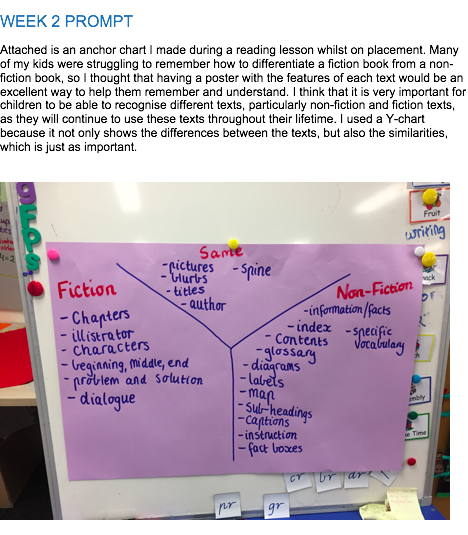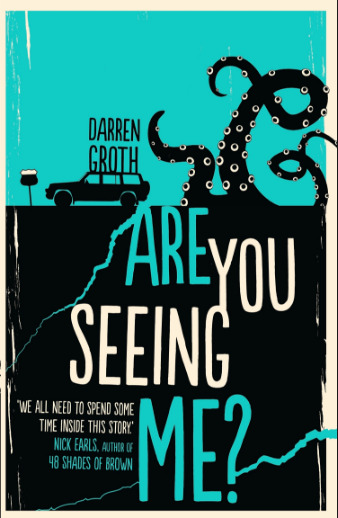#ecl310prompt2
Explore tagged Tumblr posts
Photo

ECL310 - Week 2 Prompt 2018
I made the posters in the image with the help of the class during our lesson sequence on narrative writing. We originally looked at how a story has a beginning, a middle, and an end, then looked at popular fairy tales to explore plot, setting, and characters. These posters helped form the base knowledge required for the creation of their own fairy tales with reference to these examples from known texts. These simple posters were used to create a second, permanent fixture, for the classroom. This secondary poster included all parts of narrative writing and was more visually stimulating for the students with the inclusion of suitable fairy tale images for each sub-heading. Unfortunately I didn’t take any photos of this and it was left pinned to the classroom wall!
0 notes
Photo
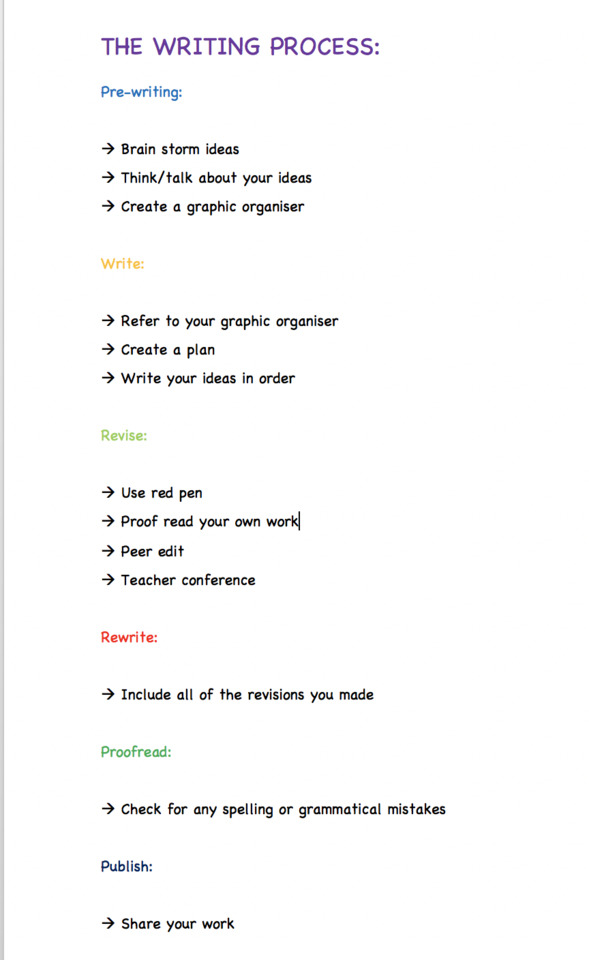
writing process poster
0 notes
Photo

Prompt 2: literacy poster
I selected this poster, as I believe the ability to ask a good question is highly important. As a primary teacher, every class I have will see a poster similar to this, although the criteria will change slightly depending on the age of the students I am teaching. I have seen many students struggle to successfully question, in literacy, mathematics, and even the school yard. Subsequently, these students could also struggle with comprehension. How can you identify facets of a text, for example, if you cannot think of questions to ask yourself whilst reading?
0 notes
Photo

This poster or posters was something that i saw in my second year placement that I really thought was helpful for the students. CAFE is not uncommon in many classroom and for good reason it focuses on key important points for literacy; Comprehension, accuracy, fluency and expanding vocabulary. Having this hanging in the classroom somewhere in one shape or form is a constant reminder for the children what is expected of them but also what they need to strive to improve.
0 notes
Photo

Prompt 2:
This is a poster I would like to put up in my own future classroom. As a student I always found myself struggle to remember what nouns, verbs, adverbs & etc were. So I thought by putting together this poster it could be useful for those students who struggle in the same way as I did. Also by including visual aids it further helps students remember what a noun is.
0 notes
Photo

This poster is an awesome way to visually show students the differences between different styles of writing.
0 notes
Text
Response to Prompt Two
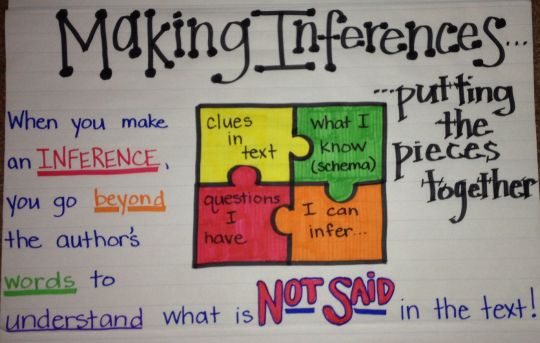
A handmade literacy poster I have come across is this one titled ‘Making inferences’. It is not uncommon for students to struggle with reading comprehension; this poster encourages them to put the pieces together and infer. I like this poster because it clearly outlines what an inference is using a puzzle metaphor to dissect the focus.
0 notes
Photo

ECL310 Prompt 2- My Poster
0 notes
Photo

Handmade poster display made by my grade six mentor teacher to help her student’s understand the purpose of an Apostrophe and how it should be used.
0 notes
Photo

On placement I taught a literacy lesson in grade 4 which was focused on similes, metaphors, onomatopoeia and personification. We made a poster to hang up at the front of the classroom which the students could refer to in their narrative writing.
Making the poster was an excellent ‘tune in’ for the lesson whilst it allowed to students to revise, share ideas, learn from one another and have a poster to refer back to.
0 notes
Text
Prompt Two 2018
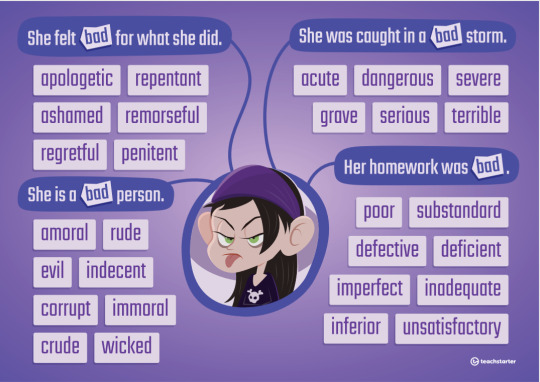
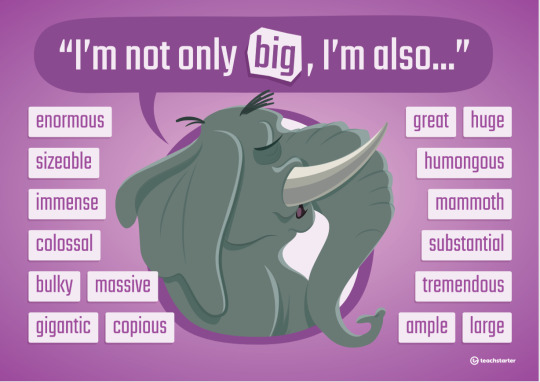
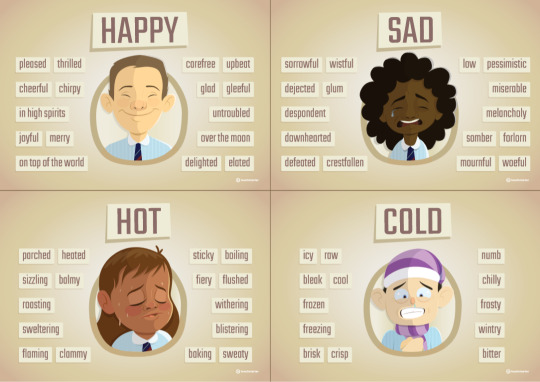
I see many of these types of posters which i believe are extremely important to have in the classroom. When i was at school, i used to get bored with using the same words and always seeked the thesaurus to assist with this. These posters would be extremely helpful for students to expand their vocabulary and to ensure that they are utilising a variety if different words, especially for descriptive writing pieces.
0 notes
Text
PROMPT TWO
As mentioned in my previous post, I don’t have many fond memories of reading to reflect upon as I found it a somewhat boring task as a kid. As such, I had a negative attitude towards reading that was persistent throughout my schooling years and even throughout the early years of my tertiary studies. Despite this, I never found difficulty in reading texts and there was never any need for concern around the fluency or accuracy of my reading. Not dissimilar, was my comprehension skills, as I could often recall upon main ideas and evens of the story and even using inferencing and predicting skills to look beyond the text.
Whilst I could achieve this, I do have distinct memories of being known as a ‘slow reader’ by my peers, as I was always having to reread pages or passages of texts, so as to answer the comprehension questions. I attribute this to my little understanding around the importance of doing the following steps in the poster I have created and attached below. Since studying literacy in early years and now middle years, practicum experiences and PDs such as that taken by Lynn Watts, I have become aware of the need for students to develop skills that allow them to:
Activate their prior knowledge
Make predictions and inferences
Visualise events and settings
Ask and create questions
Recall main events and main ideas
Describe what they now know during and after reading
Describe what else they would like to know
These steps ensure that students are active and engaged in the text that they are reading, aiding in their understanding and meaning-making.
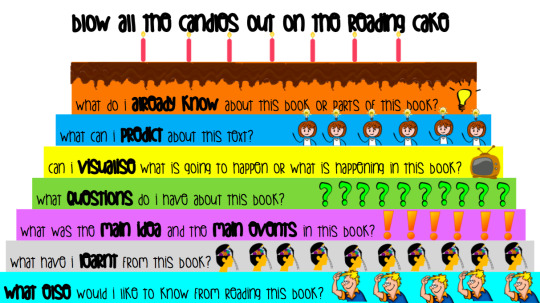
0 notes
Photo

Unfortunately i have never had the chance to make any posters during placement, however I did notice that there were plenty of posters up in my grade four classroom that were excellent in helping students with work. Many of them reflected on the writing process as it was a big focus at the time of my placement. They worked great in helping the students as a point to look back on for help. During my schooling I recall making a classroom display of a diorama. it depicted dinosaurs made out of origami and a mountain made out of painted expandafoam. I don’t have any pictures of it but i remember it being a really engaging experience, its definitely something that has stuck with me for all these years.
0 notes
Photo

Prompt 2, Prediction activity
During the last 2 weeks i was able to run guided reading sessions with a range of students in grade 1/2. At the start of each session we would ‘predict’ what might happen in the book by analysing the pictures and any text on the front cover. By doing this prior to reading, it built anticipation for the story to come and students were able to build knowledge on the book before even reading it.
10/15 minute activity for middle primary students
Teacher will facilitate meaningful conversation around the ideas presented in the text and images on the front cover of the book ‘Are you seeing me’. Throughout the mini-lesson no answer is wrong, all ideas are valid as they are an individuals ideas and interpretation of what the story might be about, students will be asked ‘why’.
- Students sit down on the floor, whilst the teacher stands up or sits at the front of the room. The cover of the novel is enlarged on the whiteboard/television.
- In partners, students will brain storm some of their ideas surrounding the text and images on the front cover, students will be timed and have 2 minutes to discuss their ideas.
- Teacher will regain student focus and will ask for some examples, this can lead to a meaningful discussion around the topic and may give students who do not yet understand some ideas and clarification.
- Each student is given a white piece of a4 paper, they are to draw a large circle and then a stand underneath that resembles a crystal ball. Inside the crystal ball students should draw their own predictions of what they think might happen in the text.
- Students can draw arrows to the pictures and in talking bubbles can write small sentences that describe what they think might happen in the text.
- As a debrief students will come down to the floor for a circle time, and will have the opportunity to show their work and share their ideas.
The inspiration for the ‘crystal ball’ prediction activity lesson was found at: https://au.pinterest.com/pin/523402787919813009/
0 notes
